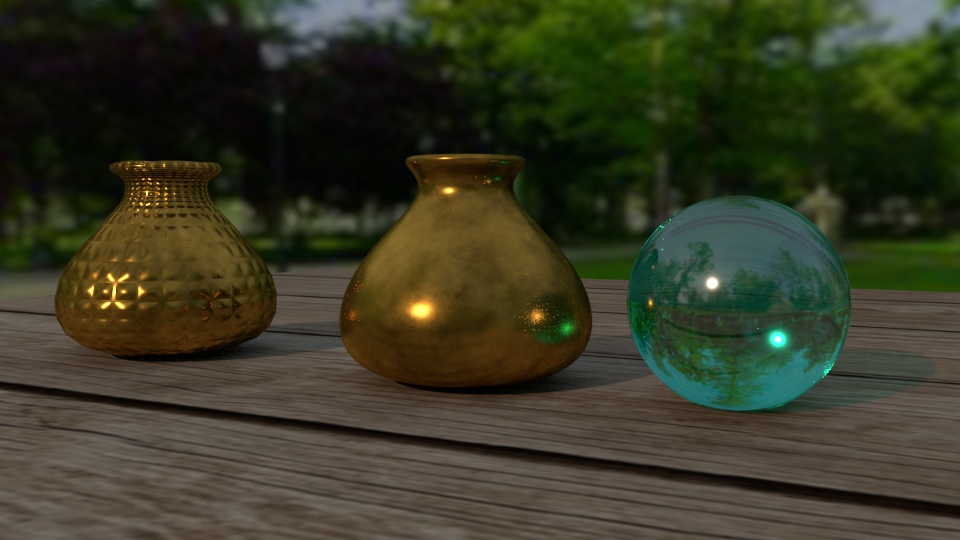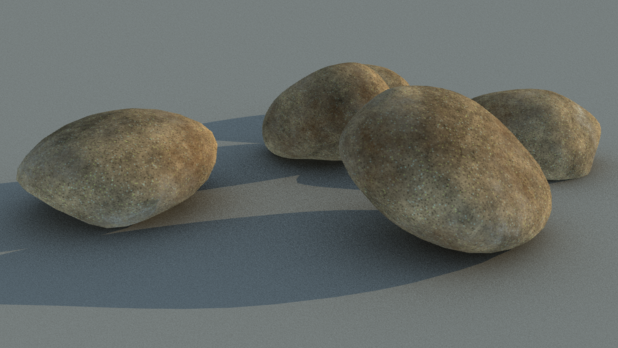Textures and Lighting
Procedurally generated and file-based texturing in Maya; HDR, 3-point, and final gather lighting.
Nautical scene
For my digital materials course, we were assigned the task of creating a cohesive scene using reflective, transparent, and translucent materials. The wax, sea glass, and fish skin were all generated using Arnold's aiSkin shader, allowing for sub-surface scattering and greater control over the subtle color layers seen. Brass and glass textures were achieved through increasing the specular weight and adding Fresnel. Rope and wood are both tileable, file-based textures; specular added to the wood texture in order to give it the high-gloss, ship wood look.
The image to the right shows development and experimentation with some of these materials. Adding a displacement node on the shader for the leftmost vase gave it a 3-dimensional pattern while overlaying a solid fractal layer for the middlemost vase imbued the appearance of tarnished brass. Adding color to the transmission for the glass (rightmost) creates the teal tone you see.
Download Brass Produced for Digital Materials courseMossy scene
Procedural shaders were used to create the rock, leaf, and moss textures you see. Multiple layers or granite, marble, solid fractals, and color ramps gave these rock textures the dimensionality to be convincing. The moss texture was applied to the boulder forms as a displacement map utilizing a solid fractal to create the 3-dimensional moss and lichen shapes. The wood staircase is a simple file-based wood texture with a bump map applied and the background image is achieved using an HDRI scape.
It was also important to study references and make deliberate choices when creating these textures. The exploration you see to the left shows two very different rocks: Montana river rock and polished Mexican black beach pebbles (click for gallery).
Download Rock Produced for Digital Materials courseDala scene
All textures in this scene apart from the glass are file-based and rendered in Renderman. To achieve the Dala horse texture, I used images taken of all sides of my own figurine and configured the UVs to match. Increasing the specular slightly on this figure as well allowed it a glossy shine and made it a convincing look-alike to the original.
Download Glass Produced for Digital Materials course

